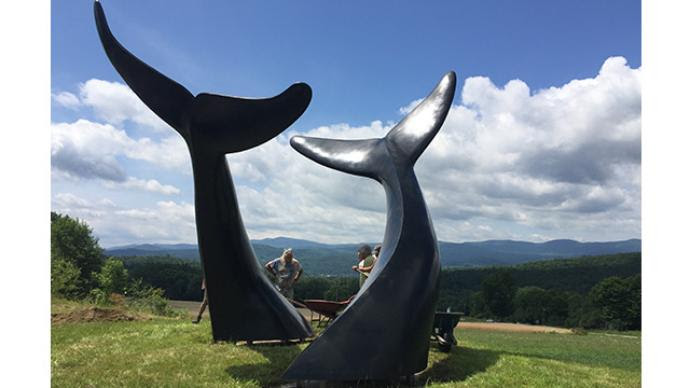Fewer ticks in the mountains
There are 10 times more ticks in the Champlain Valley than in the Green Mountains, according to a recent study. The study, which tested for Borrelia burgdorferi, the Lyme disease agent in the ticks, didn’t find any difference in Lyme Disease prevalence between the two regions.
|
|
|
 |
Aging populations
Maine, New Hampshire, and Vermont have the top-three highest median ages of all US states. A recent article details the economic impacts of population decline which include negative impacts on schools and hospitals, as well as a diminished tax base and impacts on the business environment. Immigration, according to the article, may be the key to reversing these negative effects.
|
|
 |
Podcast: Politics and Proverbs
When it comes to proverbs, Wolgang Mieder is one of the leading experts in the world. And proverbs are present in politics. With a presidential campaign looming we asked Dr. Meider to scour candidates speeches for their use of proverbs. Listen here. Listen here.
|
|
Vermont Trout Streams:
A Fly Angler’s Guide to the Best
Bob Shannon, the owner of the Fly Rod Shop in Stowe, teamed up with cartographer/geographer Peter Shea to write their new comprehensive reference book, Vermont Trout Streams: A Fly Angler’s Guide to the Best. The guide includes over four hundred trout stream locations, hand-drawn maps, fly/stocking patterns, and local tips.
|
|
|
 |
“The Vermont We Cannot See”
Photographers Lisa Dimondstein, Julie Parker and Sandra Shenk used infrared photography to capture unique photos of Vermont in their new exhibit, “The Vermont We Cannot See“. Infrared photos are taken by removing the camera’s infrared filter and replacing it with one that blocks visible light. The exhibit is located at Axel’s Gallery on Stowe Street in Waterbury and will run through September 16th.
|
|
 |
Whales Tails Return to Randolph
After 20 years, artist Jim Sardonis has constructed a new Whales Tails sculpture in Randolph where the first installation (now in South Burlington) originally resided — thanks to support from the Preservation Trust of Vermont and the Vermont Community Foundation and many local champions. Stop and visit! And read more about the backstory here in the Randolph Herald
|
|
|
|
|

